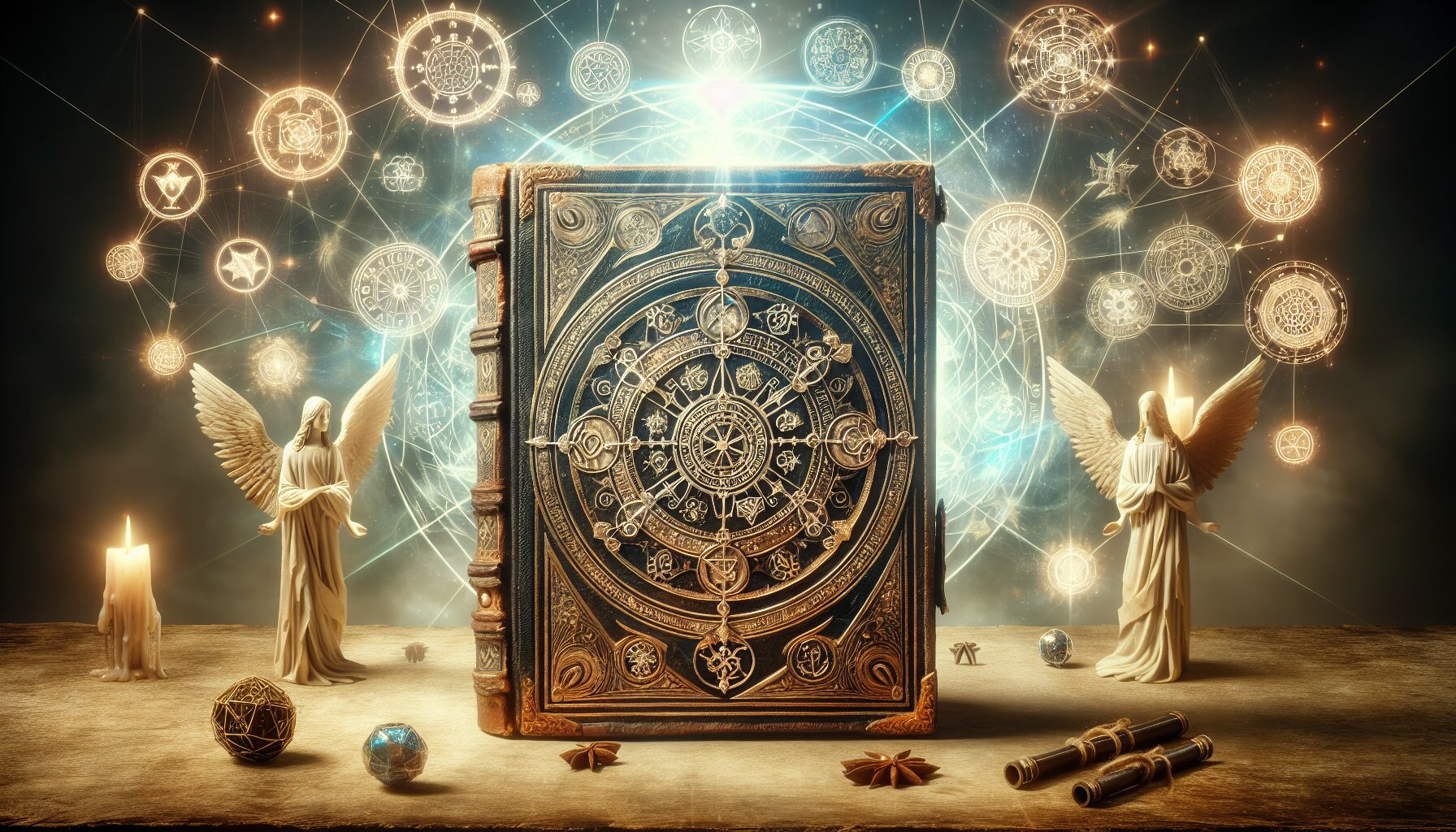The Angelic Codex: Mysticism of Sacred Texts
The Angelic Codex represents an enigmatic and profound facet of sacred texts, embodying centuries of mystical traditions and spiritual exploration. Rooted deeply in various religious and esoteric traditions, this codex is more than a mere book; it is a testament to humanity’s quest to decipher divine mysteries and connect with the celestial sphere.
Origins and Historical Background
The origins of the Angelic Codex are as elusive as the celestial beings it seeks to describe. Foundational to understanding these texts is a recognition of angelology’s central role in the spiritual traditions of the ancient world. In Judaism, Christianity, and Islam, angels serve as messengers between the human and divine, and their presence is intricately woven throughout scriptural texts.
- Judaism: Jewish mysticism, especially within the spheres of the Kabbalah, delves into angelology with various texts such as the Zohar exploring angels’ roles in the cosmic order.
- Christianity: Medieval Christian texts, like the Pseudo-Dionysius’s Celestial Hierarchy, classify angels into nine orders and elaborate on their spiritual functions and hierarchies.
- Islam: The Quran features numerous references to angels, from Jibreel (Gabriel) to Mika’il (Michael), highlighting their roles as executors of God’s commandments.
Structure and Symbolism of the Codex
The structure of the Angelic Codex often reflects a layered composition, reminiscent of illuminated manuscripts. It intertwines imagery, symbols, and mystical narratives which guide the reader through spiritual contemplation. Scholars like Harold Bloom have noted the influence of Platonic and Gnostic symbology within these texts, portraying a universe rich with metaphysical significance.
“These texts not only reflect man’s search for divine, but also how such spiritual quests shape ideologies and alter destinies.” – Harold Bloom
The codex commonly includes sections on:
- Angel Hierarchies: Detailed listings of different angelic orders and their attributes, akin to celestial maps guiding the soul.
- Chants and Invocations: Ritualistic practices intended for awakening spiritual awareness and invoking angelic presence.
- Astrological Correlations: Connections between angelic entities and celestial bodies, illustrating how heavenly influence permeates earthly affairs.
Practices and Rituals
The rituals described within the Angelic Codex often demand a profound dedication from practitioners. These practices are designed to achieve personal transformation and higher states of consciousness through communion with angelic forces. Historically, these rituals required specific settings, knowledge of sacred languages, and ceremonial purity.
In the book The Key of Solomon, attributed to the wise King Solomon, instructions for summoning angelic powers include complex rites and mental preparations. The Key of Solomon and similar grimoires reflect not only the beliefs of their creators but also provide a window into the mystical practices of past eras.
Modern Interpretations and Influence
Today, the mysticism of the Angelic Codex continues to captivate spiritual seekers and scholars alike. It plays a pivotal role in contemporary esoteric movements, such as those practicing Enochian Magic, named after the biblical patriarch Enoch, who, according to tradition, walked with God.
New age spirituality has also reinvigorated interest in the codex, adopting its teachings to fit modern interpretations of angelic meditation, healing practices, and personal empowerment. As emphasized by authors like Doreen Virtue, angels serve as guides in navigating the challenges of modern life, offering solace and divine insight.
Cultural Impact and Legacy
The cultural impact of the Angelic Codex extends beyond religious and mystical circles, influencing literature, art, and popular media. Renaissance art, for example, is replete with depictions of angels, a testament to their enduring iconography nurtured by these sacred texts.
In literature, iconic works such as Paradise Lost by John Milton explore themes central to angelology, echoing the complex hierarchies and spiritual narratives found within the codex. Modern media, from films depicting heavenly interventions to television series exploring angelic mythologies, all bear the indelible marks of these ancient narratives.
Conclusion
The mysticism of the Angelic Codex thrives at the heart of human spirituality. It resonates through its intricate blend of history, belief, and sacred tradition. For those who delve into its pages, the codex offers not just a glimpse into the divine, but a pathway towards spiritual enlightenment—a journey bridging the earthly and the ethereal.
As we continue to interpret and explore its meanings, the Angelic Codex remains a living document of mystical introspection, ultimately underscoring the timeless human quest for connection with the divine.

Comments